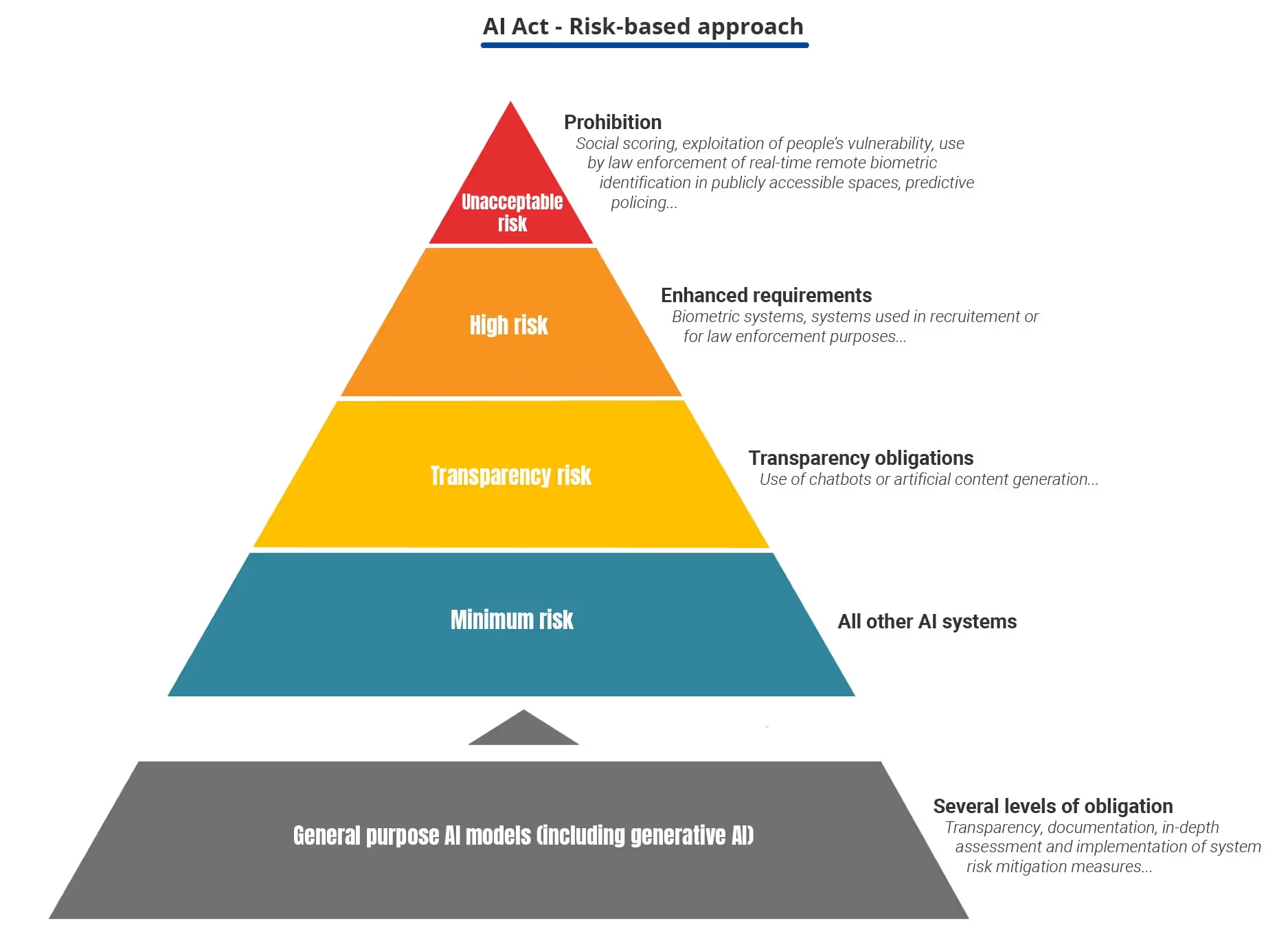For high-risk systems, we guide your compliance process with the following steps:
1. Establish a risk management system: We implement appropriate measures to manage identified risks.
2. Validate data quality and avoid data discrimination: We test the AI system in a controlled environment to ensure the absence of bias and minimize discriminatory results.
3. Evaluate accuracy, robustness, and cybersecurity: We develop accuracy indicators and measures to correct for potential bias.
4. Ensure human control: We establish human oversight measures to reduce risks and allow users to trust these tools.
5. Respect the obligation of information and transparency: We guarantee the accessibility of archives throughout the lifetime of the AI system to ensure traceability and transparency.
6. Document the activities of AI systems: We implement a quality management system, including regulatory compliance, design, development, testing, and risk management.
7. Develop technical documentation: We design detailed system documentation.
8. Submit the declaration of conformity: Each high-risk AI system must have a declaration of conformity written, signed, and submitted to national authorities, with updates in case of changes.
9. Ensure CE marking: We verify that the CE marking is affixed in a visible, legible, and indelible manner, attesting to compliance with European requirements.
10. Proceed with registration : We register the organization that developed the AIS and the AIS itself in the EU database.
The commercialization of a high-risk AI solution therefore requires rigorous and well-supervised compliance.















.svg)


.svg)



































































.svg)
.svg)
.svg)